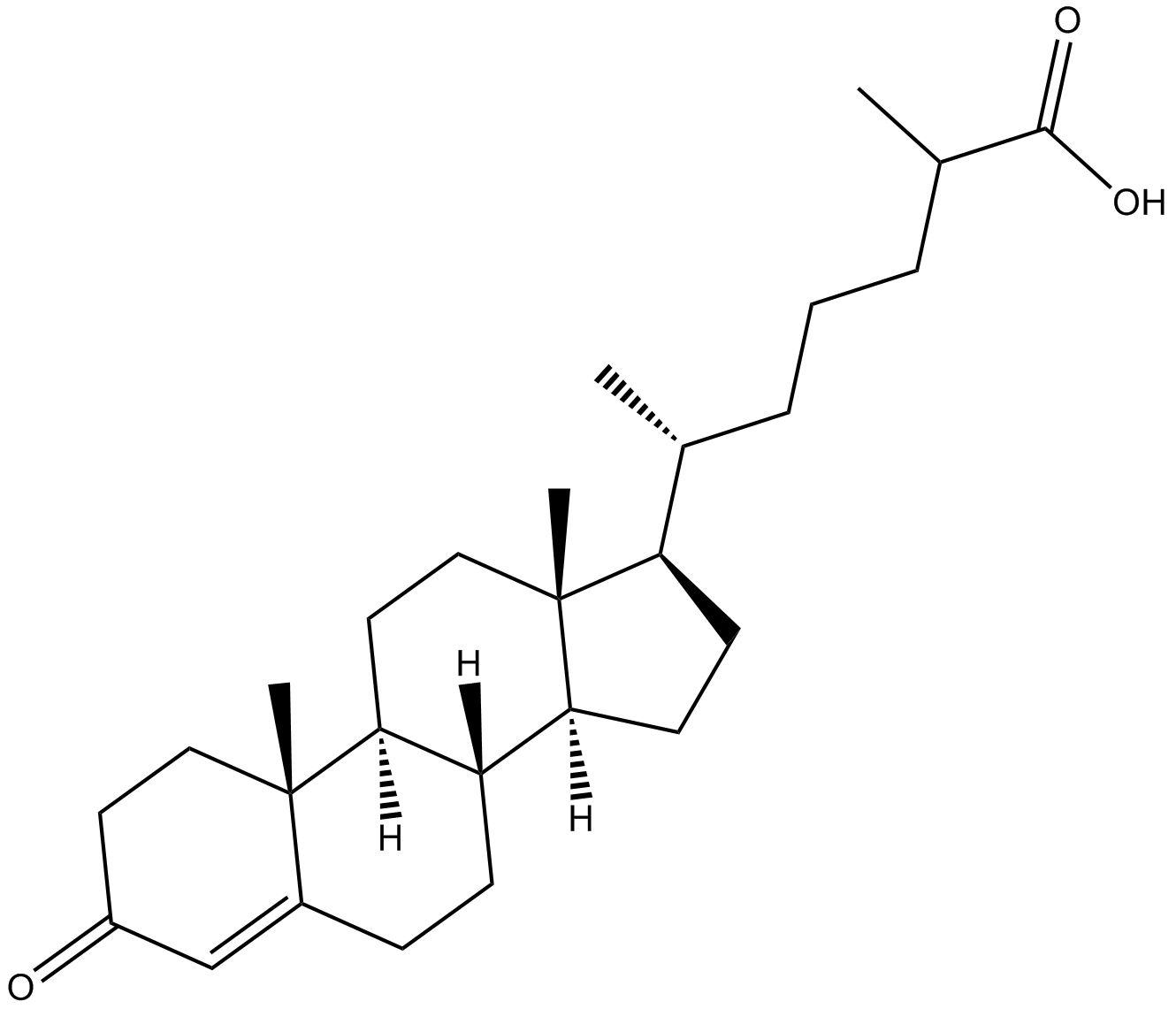Δ4-Dafachronic Acid (Synonyms: 3-keto-4-Cholestenoic Acid) |
| Catalog No.GC17515 |
DAF-12 activator
Products are for research use only. Not for human use. We do not sell to patients.

Cas No.: 23017-97-2
Sample solution is provided at 25 µL, 10mM.
Δ4-Dafachronic acid is a DAF-12 activator.
Steroid hormone dafachronic acid (DA) has been identified to regulate dauer formation and lifespan in Caenorhabditis elegans via binding to the nuclear receptor DAF-12. DAF-12, an orphan nuclear hormone receptor, regulates dauer larva diapause, reproductive development, fat metabolism, as well as life cycle/longevity in C. elegans. In addition, DAF-12 is needed for entry into dauer by acting as a transcriptional repressor of target genes that favor reproductive development when it is not bound to ligand.
In vitro: Δ4-Dafachronic acid is a racemic version of a sterol-derived hormone acting as a ligand of DAF-12. In a previous study, it was found that there was no significant increase in the Δ4- and Δ4-dafachronic acid concentration in the long-lived glp-1 mutant, nor in the mutants defective in dauer formation [1]. Another previous study provided insights into the molecular interface between DA and IIS pathways and suggested that Δ4- and Δ7-dafachronic acid pathways had unique as well as overlapping biological functions in the control of development and lifespan [2].
In vivo: Up to now, there is no animal in vivo study reported for Δ4-Dafachronic acid.
Clinical trial: So far, no clinical study has been conducted.
References:
[1] Li TM et al. No Significant Increase in the Δ4- and Δ7-Dafachronic Acid Concentration in the Long-Lived glp-1 Mutant, nor in the Mutants Defective in Dauer Formation. G3 (Bethesda). 2015 May 12;5(7):1473-9.
[2] Dumas, K. J.,Guo, C.,Wang, X., et al. Functional divergence of dafachronic acid pathways in the control of C. elegans development and lifespan. Dev.Biol. 340(2), 605-612 (2010).
Average Rating: 5 (Based on Reviews and 29 reference(s) in Google Scholar.)
GLPBIO products are for RESEARCH USE ONLY. Please make sure your review or question is research based.
Required fields are marked with *




















